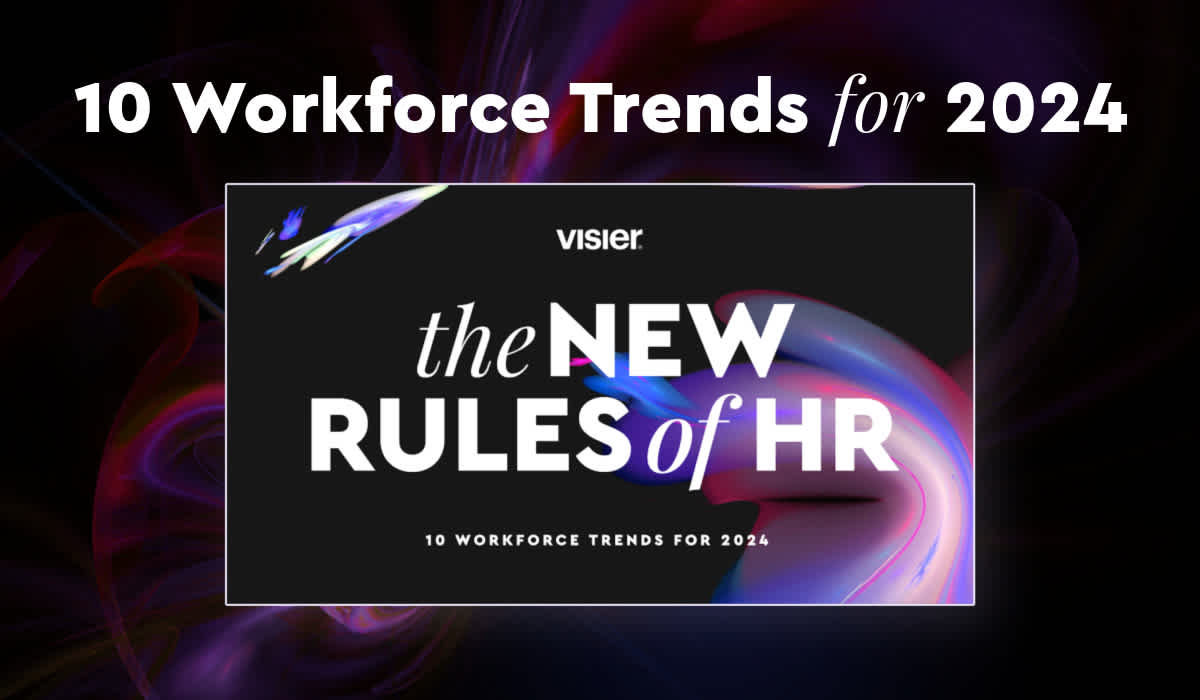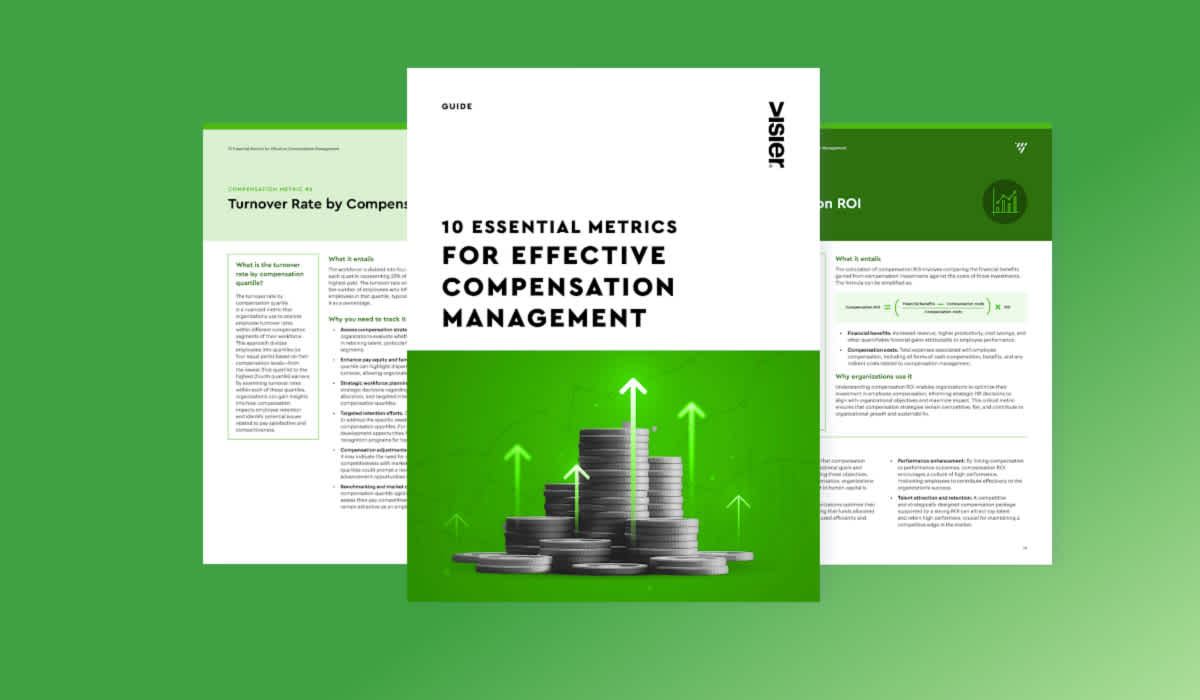10 Total Rewards and Compensation Questions Vee Can Answer in Seconds
Visier's genAI assistant Vee answers workforce questions in seconds. Here are 10 real examples of total rewards and compensation answers from Vee.

This post is part of a series of questions to ask generative AI for people analytics. Explore other posts in the series to learn which questions AI can answer for workforce planning leaders, HRBPs, people analytics leaders, and CHROs.
There are many factors that employees consider when deciding whether to accept a job or stay with their current company. Many of those considerations are part of companies’ total rewards programs, a collection of salary and benefits offerings designed to boost engagement and longevity.
The value of total rewards has become increasingly important in a competitive market for talent. As Deloitte points out, “These offerings have taken on new importance as employees embrace more flexible ways of working and expect an employment experience that matches their personal and professional priorities and promotes well-being.”
Creating and implementing a total rewards strategy to generate strong results has historically been challenging for even the most experienced HR leaders. AI is changing that. Total rewards leaders can use generative AI to automate routine compensation queries like assessing pay equity or compensation ratios and get fast answers to even the most complex compensation and benefits questions.
Tools like Visier’s generative AI assistant, Vee, can help total rewards teams, CHROs, people managers, and HRBPs to leverage the power of genAI to drive more sophisticated business insights that lead to better decision-making—and results.

10 total rewards and compensation questions Vee can answer in seconds
Strategic compensation planning is essential for attracting new employees and retaining top talent. To effectively plan and manage compensation in the business, total rewards teams and HR leaders must be able to make swift, targeted decisions. Here are 10 total rewards and compensation questions Vee can answer instantly.
1. How has the gender pay gap in our organization changed in the last three years?
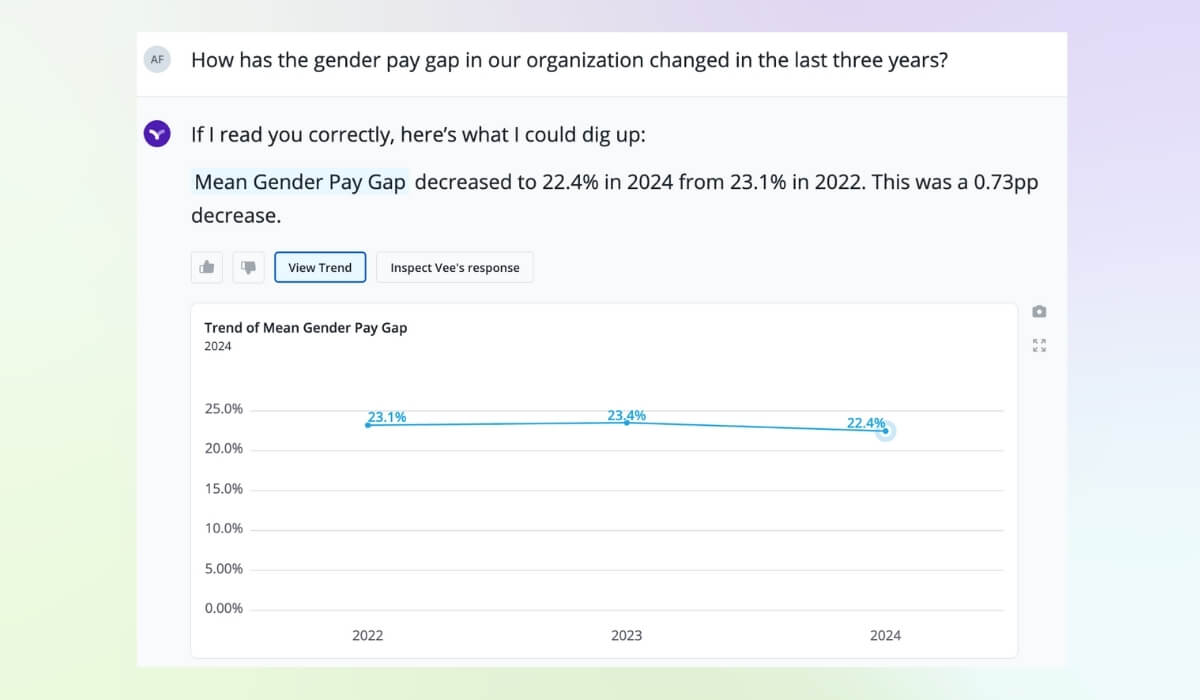
Pay equity and transparency are critical issues for organizations as new pay transparency laws continue to go into effect in the U.S. and European Union. Meanwhile, the gender wage gap in the U.S. hasn’t improved much in two decades, with women earning about 82% of what men earned in 2022, and it yawns wider when factors such as motherhood, age, race, and ethnicity are factored in.
By regularly monitoring gender pay gap trends and fluctuations within the organization—and comparing them to industry benchmarks—leaders can make agile, data-driven compensation decisions that ensure fairness and equitable pay.
2. How do budgeted salary increases compare for men and women this year compared to last year?
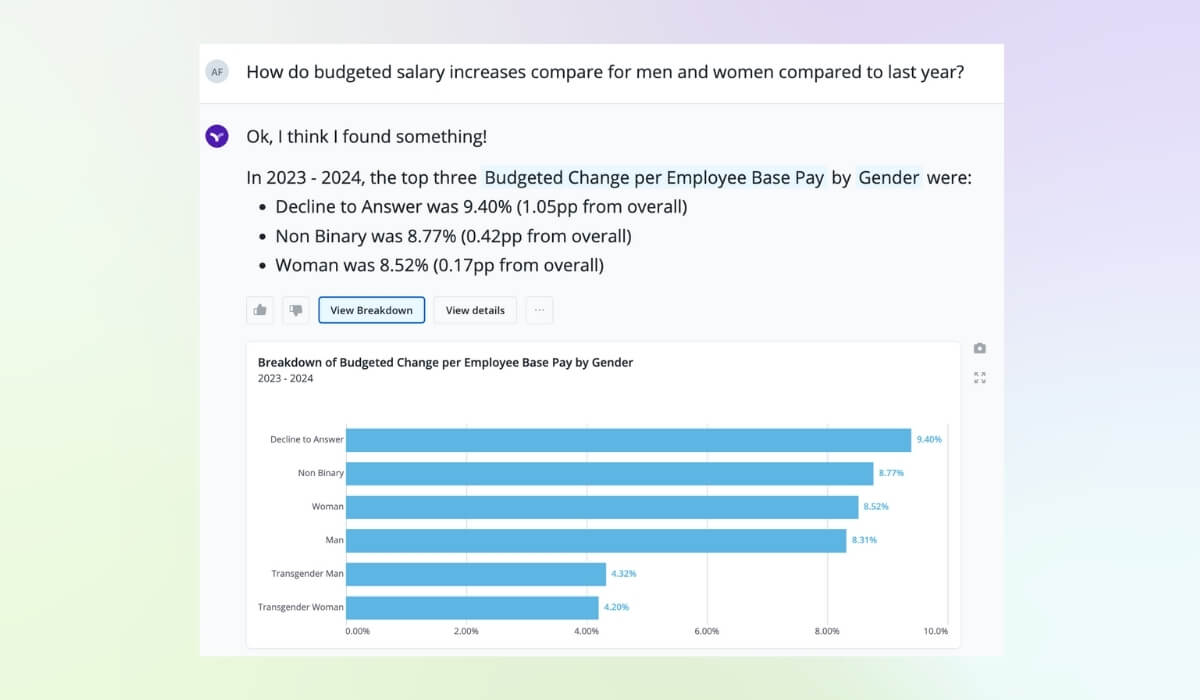
Monitoring budgeted salary increases by gender is another way for organizations to proactively manage potential pay disparities, pointing to opportunities to make adjustments and ensure that compensation is aligned with business objectives and pay equity and transparency strategies.
3. How does benefit utilization compare to last year?
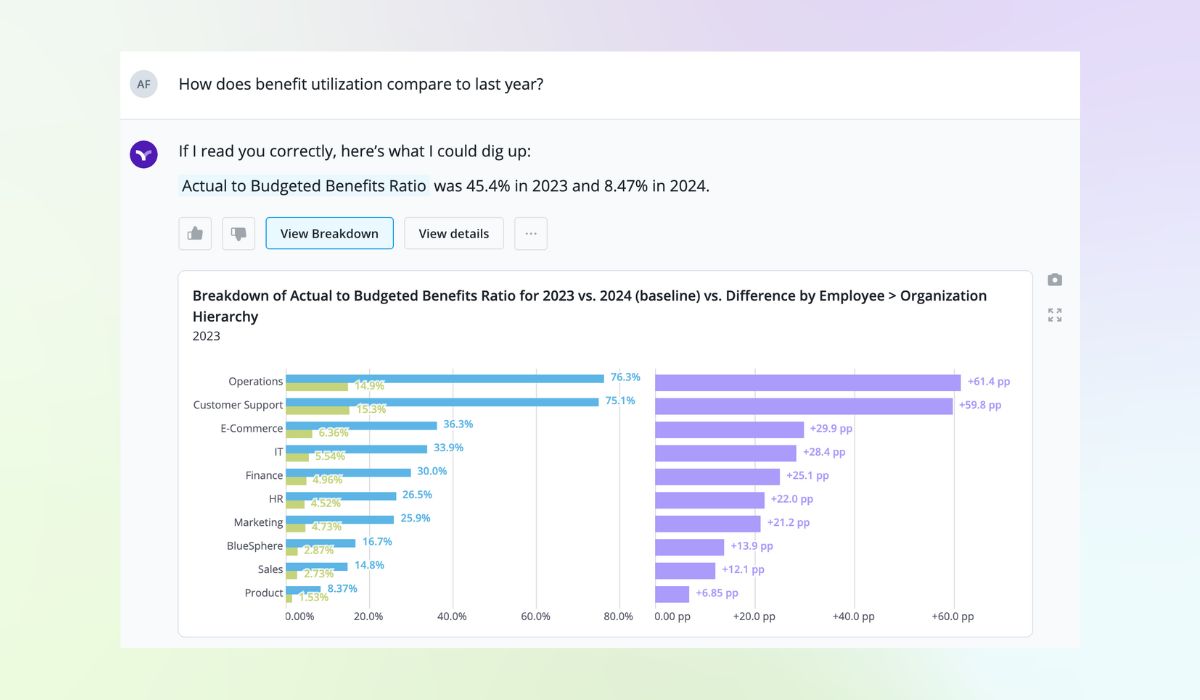
Tracking benefits utilization provides insights into how employees use the benefits offered, allowing organizations to ensure that the benefits programs align with employees' needs and preferences. By comparing utilization across departments, organizations can identify specific areas where benefits may be under or over-utilized, enabling targeted adjustments and more equitable distribution of resources. HR leaders and total rewards teams can use these insights to optimize benefits programs and adjust budgets based on actual spending.
4. What are the estimated bonus payouts this year compared to last year?
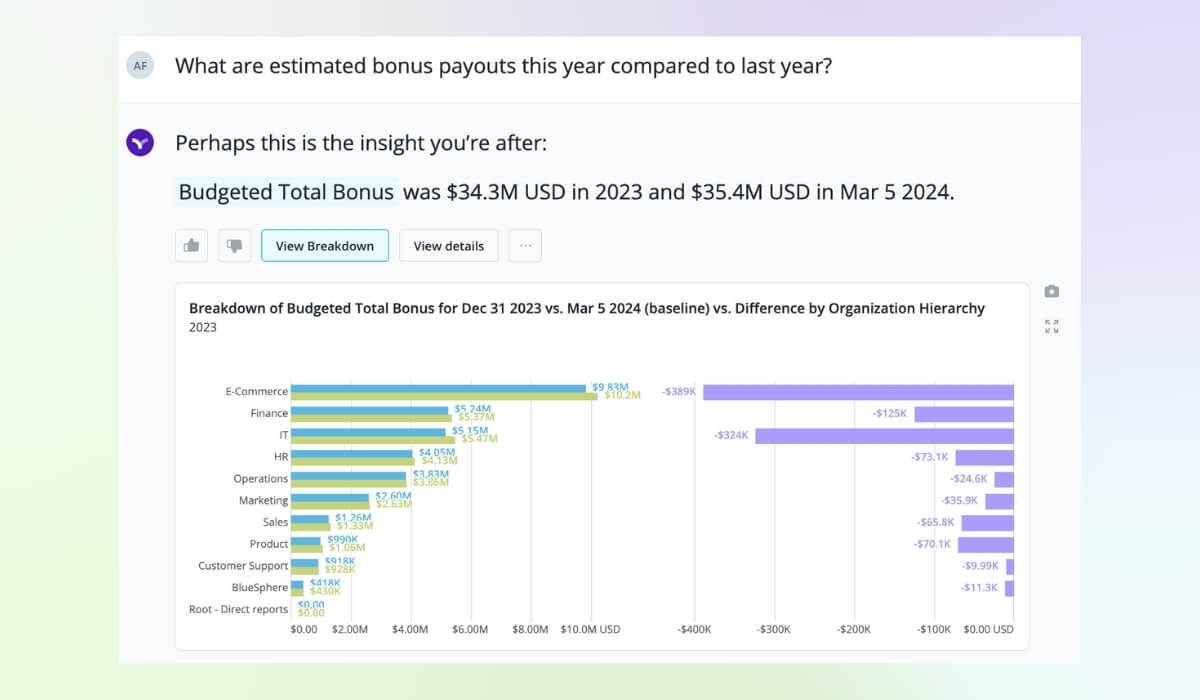
Tracking bonus payouts provides valuable insights into compensation trends and patterns. By understanding bonus payout activity, HR leaders can effectively plan compensation budgets that are competitive in the market while anticipating future costs. Comparing current bonus payouts to previous ones also enables total rewards teams, HRBPs, and people managers to identify potential retention risks related to bonus payouts and make adjustments quickly.
5. How many employees were promoted this year?
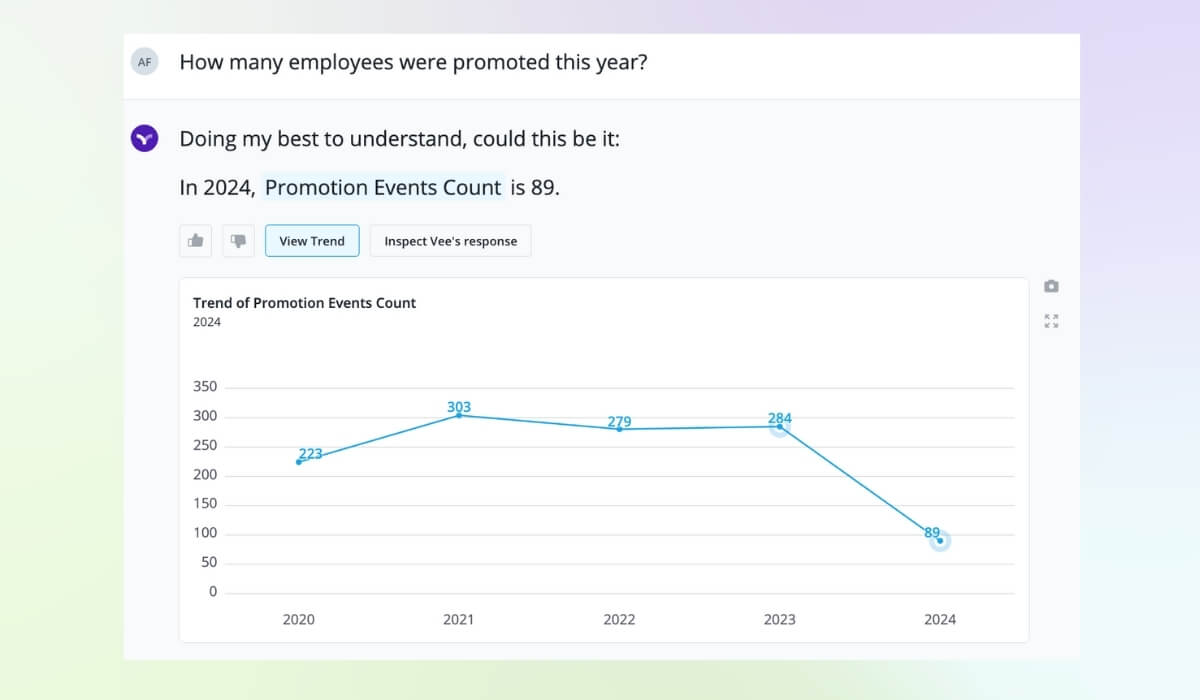
Quickly access insights into employee promotion activity to identify opportunities for talent development or areas where inequities may exist. For instance, comparing promotion trends across departments or based on various employee demographics like age, tenure, or race, can yield early warning signs that can allow HR leaders to be proactive in heading off potential issues or losing key talent. You can also use these insights to understand if the number of promotions is increasing or decreasing in the organization, and investigate if you notice unusual shifts.
6. How many high performers were promoted this year compared to last year?
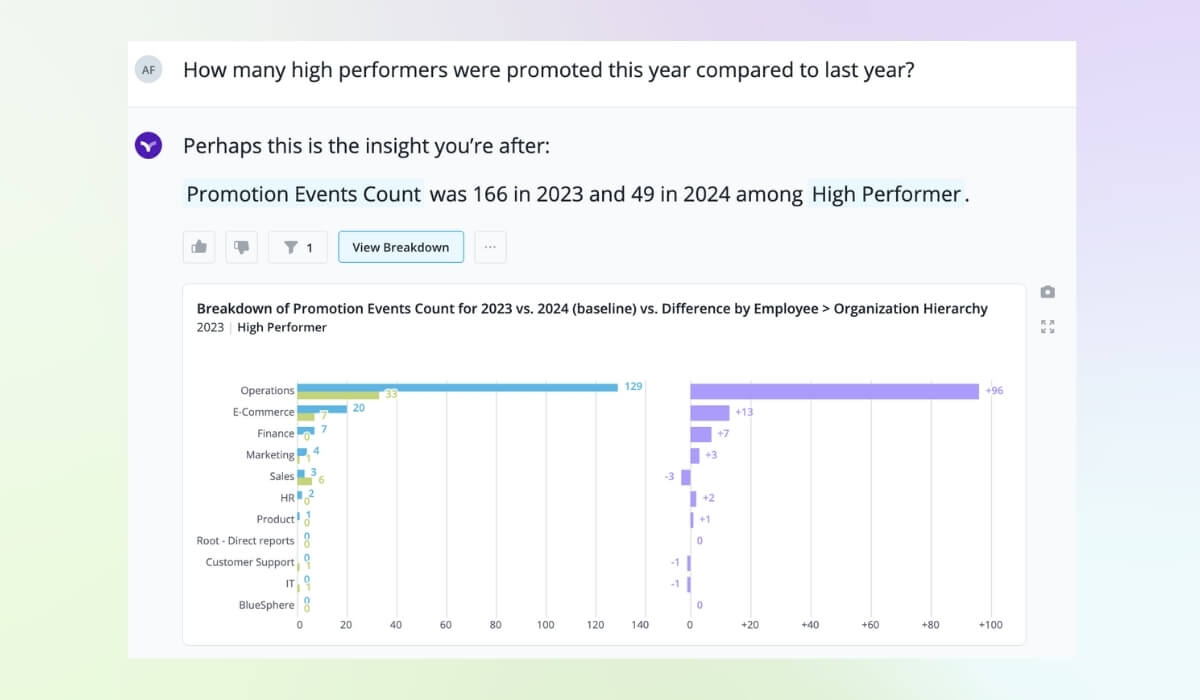
Once you know the general promotion patterns and trends in your organization, you can dig in deeper to understand how certain groups are recognized and compensated, like high performers. For instance, are high performers promoted more frequently than other employees? Vee will show you the answer so you can ensure high-performing talent is fairly recognized and rewarded.
7. Which high-performing employees haven't received a promotion in more than one year?
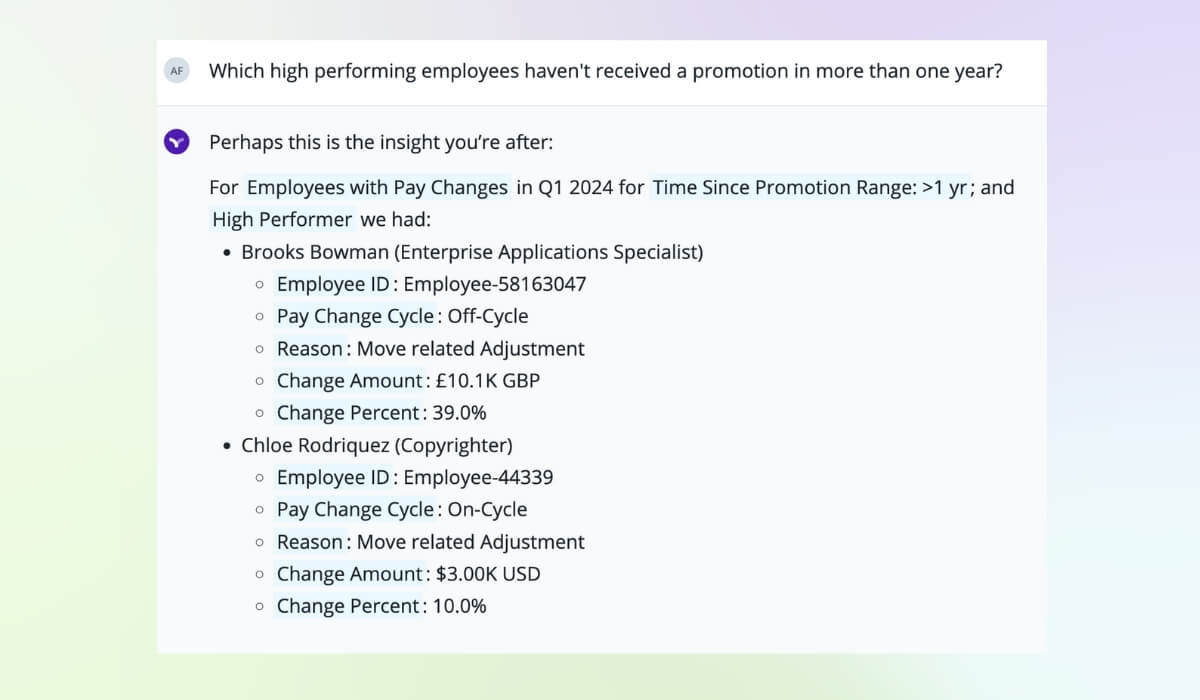
Promotion opportunities and career development are important, especially for high performers. High-performing employees who haven't been promoted in more than a year can signal a potential resignation risk. If they don’t feel they have access to new opportunities within the organization, they may decide to look outside of it. Monitoring promotion timelines enables HR leaders to address development gaps and foster growth opportunities for high performers who might be at risk of exit before it's too late.
8. How does sales compensation compare to the rest of the organization?
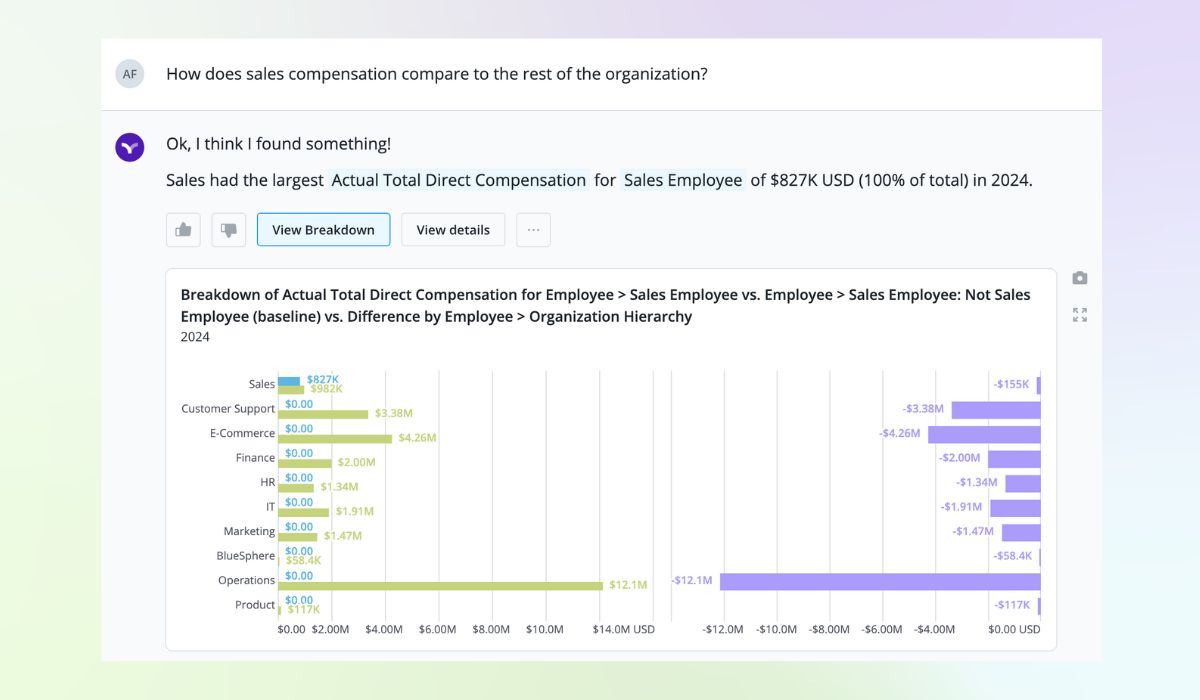
Comparing the compensation of a specific department with the rest of the organization helps identify potential fairness issues across the organization. For instance, if you're looking at compensation in the sales organization, you can ensure members of the sales team are fairly compensated for their contributions and the revenue they bring into the business. You can ask Vee for the comparison and quickly drill down into the chart to spot potential inequities, see how they compare to other organizations, and take swift action.
9. What's the mix of contractors and FTEs in the marketing department?
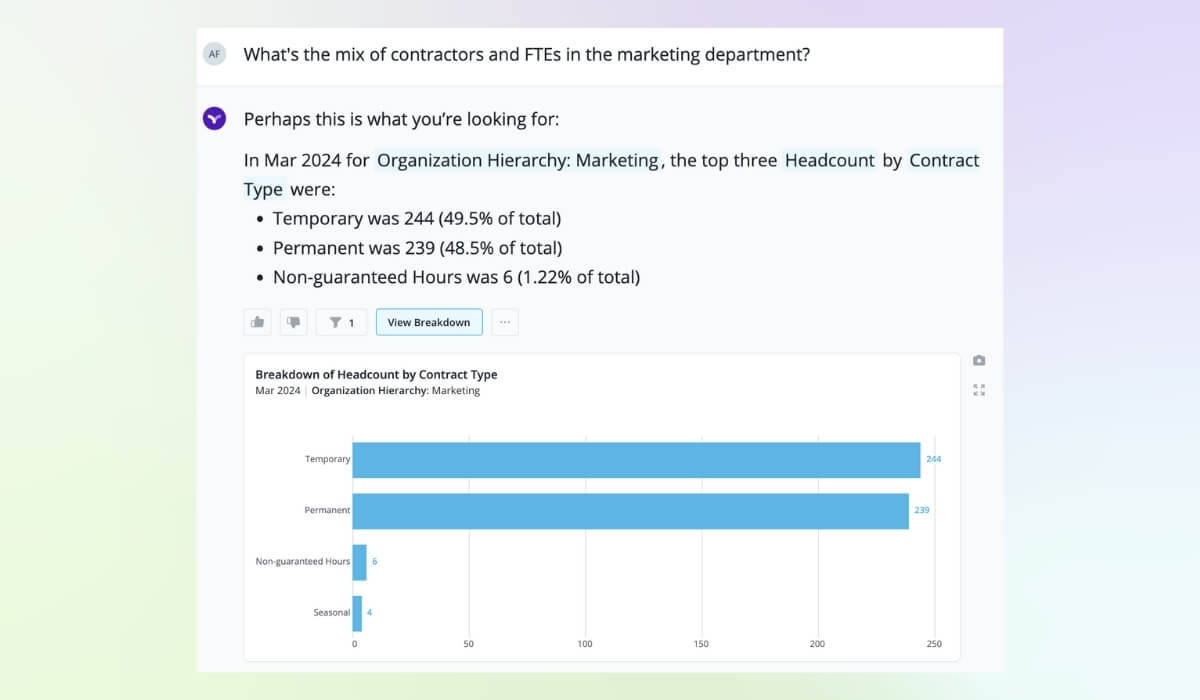
Today’s workforce is increasingly made up of a combination of full-time equivalent employees (FTEs) and contractors, or gig workers. The mix of contractors to FTEs will vary by department. Vee makes it easy to drill down to understand the mix by department, job function, or role to gain additional insights into resource distribution and organizational needs. Teams can use these insights to pinpoint departments with high contractor utilization, indicating potential gaps in staffing or skills that may need to be addressed through hiring or talent development initiatives.
10. How does compensation for executives compare to employees?
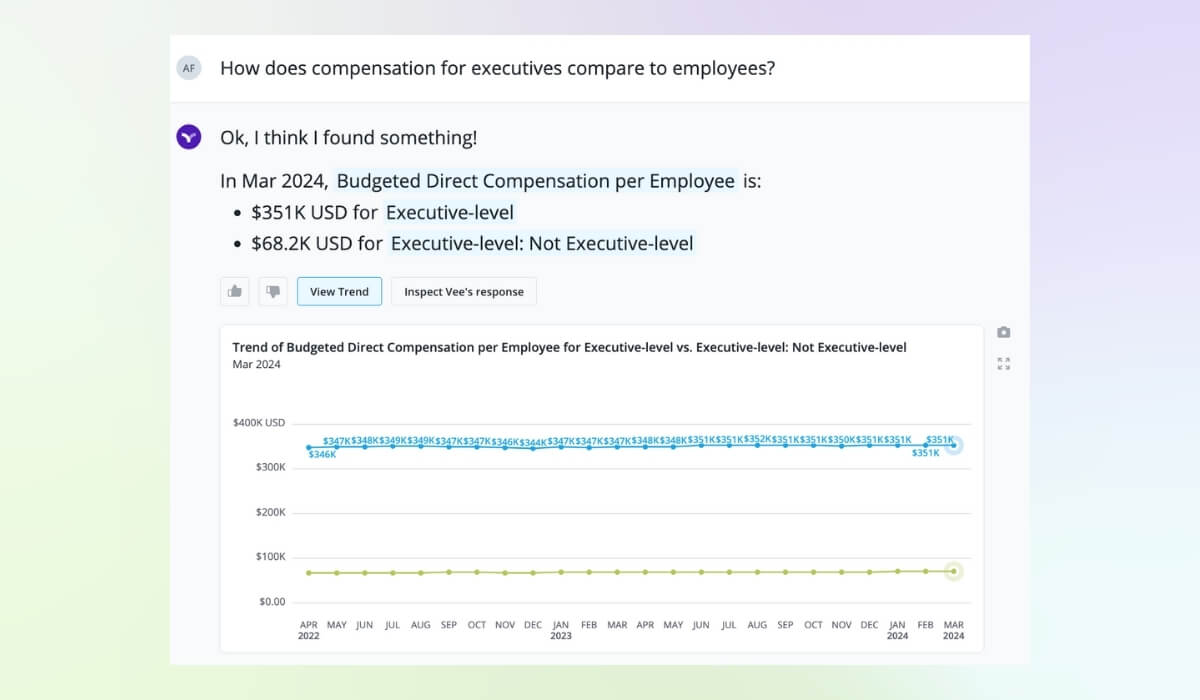
The CEO-to-worker pay ratio has escalated dramatically, with ratios as high as 344-to-1 in 2022, according to the Economic Policy Institute. Extreme pay gaps can negatively impact employee engagement, productivity, and even brand value. Understanding how executives and employees are compensated enables HR leaders and total rewards teams to address inequitable pay, and promote pay transparency in the organization. Vee delivers these answers quickly so that leaders can design compensation packages that are fair, equitable, and aligned with business objectives and budgets.
Visier’s Vee is poised to help everyone in HR—from the CHRO to HRBPs and individual practitioners—find the answers to questions that can help them make better people decisions. This is especially important from a total rewards perspective. Ensuring competitive pay and benefit practices for prospective and current employees helps companies boost retention and minimize talent acquisition costs while keeping top talent on board.
When you have questions, Vee has answers—available at your fingertips in the apps you use daily, like Microsoft Teams.

Generative AI for total rewards and HR
Vee, Visier’s generative AI digital assistant delivers fast, intuitive, accessible workforce insights to people leaders. Learn the latest product updates here.
Visier's genAI assistant, Vee, answers line manager's questions about the workforce in seconds. Here are 10 real examples of answers from Vee.
Generative AI innovations like digital assistants are changing the way we work, and pose significant security challenges. Are they secure enough to use with people data?
As the use of AI continues to evolve, it's critical to comply with AI regulations like the EU AI Act and the U.S. AI Bill of Rights. But where do you start?
Get the Outsmart newsletter
You can unsubscribe at any time. For more information, check out Visier's Privacy Statement.

